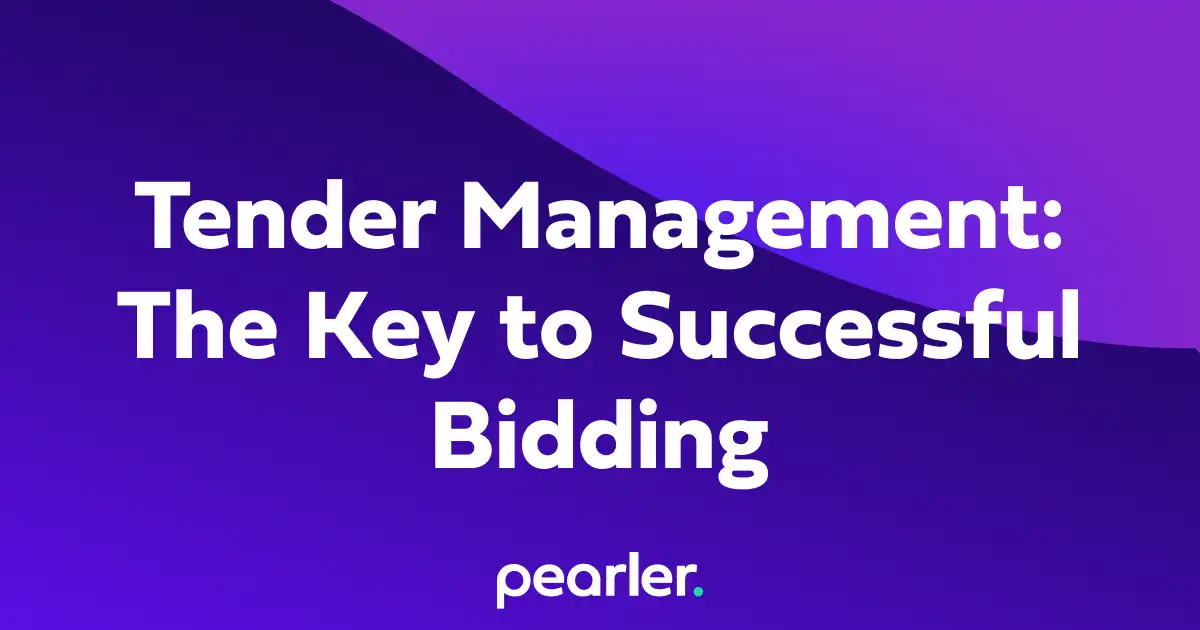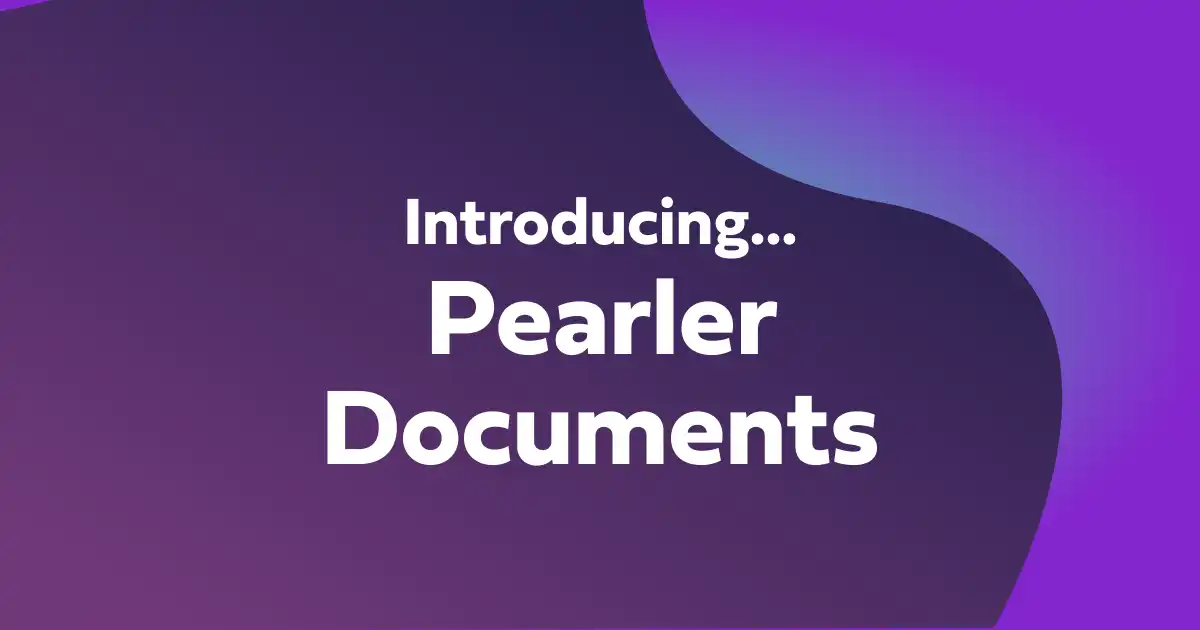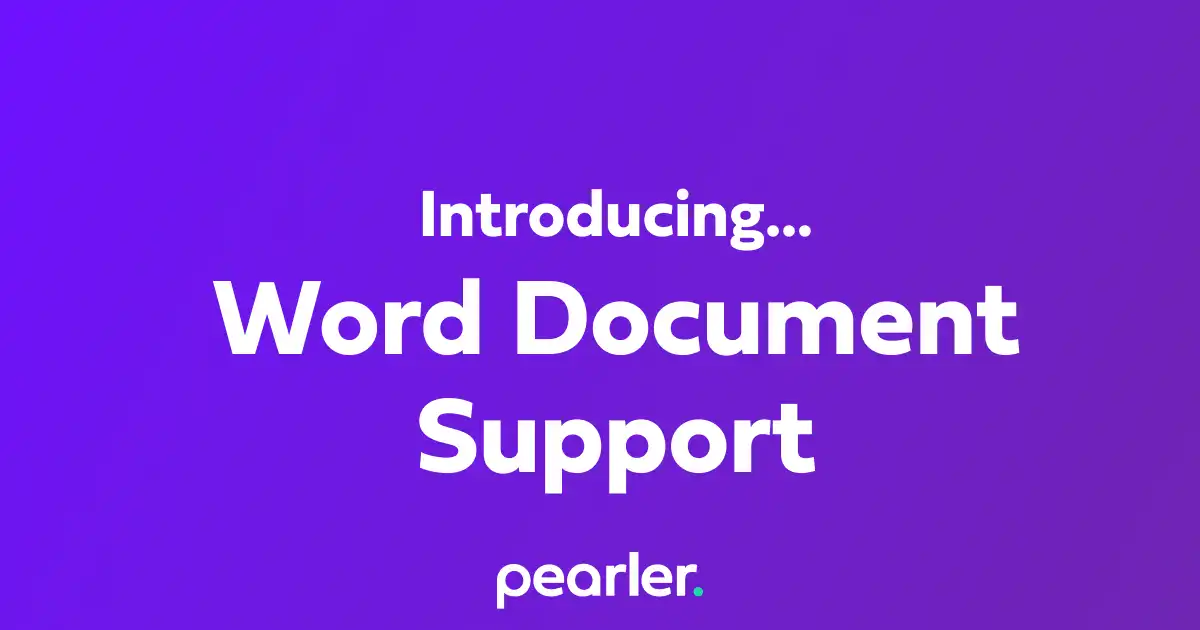Unveiling Tender Management: The Key to Successful Bidding

31st March 2023
Businesses, charity organisations, and governmental bodies frequently launch a competitive bidding process to secure necessary supplies or resources for their operations. This process begins in the United States with a request for proposals (RFP), although it is known as a tender in many other countries. Vendors reply with a proposal or bid, enabling firms to assess their options and choose the best one for their needs.
Optimising purchasing outcomes and securing the required resources depend on managing the tender process effectively. This entails creating a clear knowledge of the requirements, creating an RFP or tender document that is well-defined, and choosing a shortlist of competent bidders. Organisations must examine the proposals or bids after they have been submitted, taking into account elements including quality, pricing, delivery dates, and vendor experience. Organisations can obtain the crucial resources they require to sustain their operations by assessing the proposals or bids and choosing the option that best fits their demands.
Unlocking Optimal Outcomes: The Power of Effective Tender Management
The effective process of tender management is essential to achieving the best results for businesses. To make informed purchasing decisions, it entails acquiring pertinent market data. It also entails creating tender responses that are in line with business goals, demands, and financial constraints.
Tender managers play a crucial role in this process by collaborating closely with department leaders to find suitable vendors and send them a thorough questionnaire. The questionnaire covers all topics, including vendor background, buying requirements, and legal obligations. Tender managers occasionally also create bids in response to tenders.
Businesses can streamline their purchasing procedures and make sure that their purchases and bids are in line with their objectives and values by utilising efficient tender management procedures. In the end, this results in ideal outcomes and increased corporate success.
Procurement 101: Bid, Tender, and Proposal Management
The phrases bid, tender, and proposal management are occasionally used synonymously in the procurement industry, which causes confusion among experts. In the past, the terms "bid management" and "proposal management" have been used interchangeably to describe the procedure for responding to RFPs or tenders. However, some organisations have started using “tender management” in modern times to include both the procurement and bidding processes. For procurement to be mastered and ideal results to be obtained, it is essential to comprehend these distinctions. Welcome to Procurement 101: Bid, Tender, and Proposal Management.
Key Players in Tendering
There are several key players in the tendering process. Team members from diverse departments, including sales, procurement, operations, logistics, finance, human resources, marketing, legal, information technology, and security, generally make up tender response teams. However, there might be additional stakeholders involved depending on the project and sector.
Larger businesses could have a dedicated bid team in charge of the tendering procedure. A bid manager who oversees the entire process, as well as writers and editors who aid in the creation and improvement of bids could be included on this team. For effective tender administration and attaining the best results, it is essential to comprehend the roles and duties of these key stakeholders.
Cracking the Tender Management Process
Having a well-thought-out and repeatable process in place is essential when responding to tenders. An 8-step procedure is provided below to assist you in speeding up the response procedure and increase your chances of winning:
First, assess the tender to see if it supports the objectives of your business, whether it can be won, and if your company is ready and willing to supply the goods or services. Reviewing reports to analyse the success rates of comparable bids and any accessible competitive research should be part of this process.
Second, assemble stakeholders for a kickoff meeting where roles, responsibilities, deadlines, and goals will be assigned. Progress can be monitored with the use of a project management software created specifically for tender submissions.
Third, make sure your information library is up to date and organised so you can quickly and effectively react to queries that have been asked before. Ask subject matter experts (SMEs) to periodically review their responses.
Fourth, help develop answers to the remaining concerns that need more in-depth investigation by including SMEs and your marketing department.
Fifth, verify that the answers to each question are true, well-written, and proofread. Make sure all necessary documentation is included.
Sixth, by the deadline or earlier, send in your response. Wait to inform each stakeholder until you have a receipt.
Seventh, keep each response in a central location for use in future tender responses. Plan regular content audits.
Lastly, evaluate the response and pinpoint areas for improvement. Keep in mind that every reaction offers the chance to learn.
These methods can help businesses create a tender management process that is effective and efficient, increasing their chances of winning bids.
Tackling the Challenges
There are still plenty of challenges to overcome, even while a well-designed tender response process can help you streamline your operations and increase your chances of success.
Managing workflow, fostering cooperation, and keeping a structured information repository are some of the most frequently encountered difficulties. It's simple for team members to step on one another's toes or for there to be too few people willing to put in the necessary time when roles and duties aren't clearly defined. A strong project management platform that can clearly define roles and duties, clear any confusion, and measure progress to make sure each response arrives in the allocated time is necessary to help overcome these difficulties.
For businesses that use a scattered workforce or operate in silos, collaboration can be a big barrier. Use bid software that connects with current communication apps and promotes efficient collaboration to overcome this difficulty. Pearler.ai is a great solution for businesses seeking a bid management platform that supports teamwork and has no user licensing, allowing teams to include anybody they believe would add value to their offer.
Finally, a well-organised content management system is a crucial component of any successful tender response process. Without it, team members might waste a lot of time locating information, which would cause the response process to be severely delayed. Contrarily, businesses who use centralised content libraries, such as the one offered by Pearler.ai, may become up to 5x more productive, freeing up crucial time to concentrate on creating superior solutions.
Expert Advice and Proven Techniques
Although it's essential to have a repeatable tender response process, it's not the only element in winning bids. To increase the likelihood of success after creating a sound strategy, it's crucial to concentrate on the particulars of each tender.
Spend some time reading and understanding the entire document before launching into a delicate response. To decide whether to proceed or not, it is essential to comprehend the customer's needs. Failure to do so could alienate the customer and reduce your chances of success.
Only propose bids that you can complete. Make sure you can adhere to the conditions and deadline specified in the tender before considering it. While it may be tempting to submit bids for tenders that are a good fit for your service or product, it is not worthwhile to jeopardise your reputation by making unfulfilled promises. Instead, concentrate on negotiations that can be won and target your efforts towards practical, profit-generating prospects. Always keep in mind that you can kill two birds with one stone.
Collaboration is also crucial to the management of tenders. Even the most sophisticated ballet performances can't match the synchronisation and choreography needed for a normal sensitive response. The first step in maximising collaboration is to provide the appropriate tools. Make sure that the tools your team is already familiar with integrate with your tender response software. Respecting the time and working methods of contributors is equally crucial. It's critical to understand and respect the fact that each SME has distinct objectives and schedules in order to encourage more collaboration. You must also clarify roles and expectations to prevent team members from obstructing one another. Give each team member a clear understanding of what is expected of them. Developing a collaborative response approach will assist to shorten the procedure, improve team communication, and ultimately raise your chances of winning tenders. Collaboration is essential in tender management.
Finally, manage and plan your sensitive content in order to save yourself the trouble of last-minute content collection. Regular content audits are a proactive way to remove redundant, obsolete, or insignificant content from your library. It is advised that you have your SMEs check their own question-answer pairs as part of this procedure. An effective strategy to keep the material current and pertinent is to carry out routine audits, like quarterly. This strategy is far less time-consuming than reviewing and updating all the information just before the deadline. Long-term time and effort savings and an increase in the general calibre of the tender response are both possible with properly organised tender content.
Advanced Strategies for Tender Management using Technology
Technology can help you define, optimise, and manage the tender process more successfully with the use of cutting-edge tactics. Tender management systems can offer a quicker method of tendering, minimising manual labour and enhancing teamwork.
Both buyers and bidders can profit from using tender management systems. Time savings, enhanced productivity, better collaboration, and better goal achievement are some of these advantages. Additionally, tender management systems have distinct advantages like improved reporting and analytics, better risk management, improved collaboration, and centralised document management. Organisations can gain a competitive edge, land more contracts, and succeed more in their business endeavours by optimising the tender management process.
A tender management system can greatly benefit buyers by offering a structured approach to the tender process, which saves time, increases efficiency, and facilitates communication among team members and stakeholders. With a tender management system, buyers can collaborate with their teams and stakeholders to ensure that all requirements are covered, making the tender creation process much smoother. Additionally, buyers may be able to pull similar tenders for reference from their content library, further streamlining the process. These benefits can be achieved through advanced strategies for tender management using technology.
Bidders must get familiar with and adhere to the buyer's rules, which can be difficult and time-consuming. By ensuring that bids are well-written, thorough, accurate, submitted on time, and in the preferred format of the buyer, tender management systems aid bidders. By streamlining the procedure, this technology makes it simpler for bidders to effectively manage their submissions. The entire organisation gains from keeping a well-curated content library, because it is a useful resource for upcoming bids and proposals. Both buyers and bidders can accomplish their objectives more successfully and efficiently with the aid of technologically advanced tender management solutions.
Maximising Efficiency with Tender Management Software
Tender management software is quickly becoming a vital resource for businesses searching for a long-term solution as they strive to be more selective and negotiate increasingly complex rules, such as GDPR. Collaboration tools are essential for tender management teams that may include people from different departments or even freelancers, due to the substantial changes in organisational structures over the past few years, which frequently result in employees working remotely or in dispersed places. Tender management software should support teams in making informed decisions, assisting them in staying within buyers' constraints and helping them avoid missing deadlines in order to optimise efficiency. Finding a tender management system that can adjust to an organisation's changing demands is crucial because individual licences might impede collaboration, resource allocation, and scalability.
Choosing the right tender management system is essential for maximising efficiency. In order to support a strategic tender management process, a system must have vital elements including data, automation, strong integrations, a reliable content management system, import-export capabilities, and customisation.
An ideal system would automate tasks to increase capacity and the overall win rate, as well as offer customisable information to aid in making educated decisions. Strong content management systems should assure accuracy and offer a vast repository of company use cases outside of tender administration. Strong linkages with vital technologies should also be offered.
In order to translate tenders into a format that each user can comprehend and return the finished output to the original, the system also needs import-export capabilities. Customisation features like tables, graphics, rich text, and branded templates can help you stand out in the crowd and increase your chances of landing more business. You can discover a tender management system that fits your organisation's needs and increases efficiency by ranking these essential elements in that order.
Leveraging Tender Management Tools for Greater Efficiency
A wide range of advantages that tender management software provides can improve an entire organisation's efficiency. Critical documents and knowledge assets are stored in a central location using a comprehensive content management system.
Tender management tools, in general, reduce time, improve bid quality, and increase business revenue. They are a tool for enabling sales that is advantageous to all departments in charge of generating money.
Additionally, when it comes to procurement, tools for tender management make it easier to draft requests that meet all requirements. Due to the organised and planned approach that these technologies offer, the entire tender process is more effective, communication is streamlined, and deadlines are met.
Boost Your Efficiency with Pearler.ai's Tender Management Soultion
Pearler.ai's tender management solution is the answer to your organisation's efficiency and win rate needs. Our software is built for collaboration, capacity-boosting, progress-tracking, and deadline management. Say goodbye to tedious administrative tasks and hello to more time developing winning proposals. Ready to see how Pearler.ai can benefit your organisation? Let's chat.
Tender Management Demystified: Your FAQs Answered
What is a tender?
A tender is a legal document that invites multiple parties to bid on a large purchase. It can also refer to the bids submitted in response to the document.
How does a tender differ from an RFP?
Although both documents request formalised purchasing proposals, the term "tender" is more commonly used outside of the United States.
What is a request for tender (RFT)?
A request for tender is a formalised request for a business proposal.
What are the evaluation criteria for tenders?
Tenders have strict evaluation criteria. The winning bidder must provide exact deliverables, security, business requirements, and a price that fits the buyer's budget.
How do I know if my tender has been successful?
Tender success can be measured by factors such as quality and response time, as well as whether you win the bid. Tender management software can help evaluate quality and response time. Winning bids can take weeks or months to determine, but customer inquiries may indicate being shortlisted.
Other Blogs
Looking for more help using Pearler? No problem. Here are some other guides to help you get to know your way around all our great features.

Pearler's Latest Feature: Never forget to attach documents again!
Document management is an essential part of responding to an RFP or Security Questionnaire. It's important that the documents you send are always up to date and accurate.

Launching our AI Answer Assistant
Ridiculously great RFP responses just became childs play. Suggest, Write & Re-write fully integrated.

Import and Export Word Documents
Pearler now supports importing Questionnaires from Word Documents and exporting your answers back into the original document.